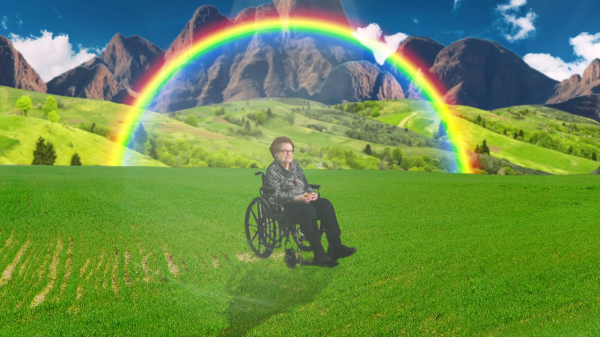
Save this storySave this storySave this storySave this story
“Margie Soudek’s Salt and Pepper Shakers” is an artifact of family connection, an illustration of the way that objects can hold memories, and a portrait of how the act of sustained attention brings people together.
Margie Soudek came into her first set of salt and pepper shakers—a pair of ducks “dressed like ladies”—around 1946. Throughout the next seven decades, Soudek’s collection expanded to fill a wall-to-wall and floor-to-ceiling set of shelves. She amassed more than two thousand sets. “Once she started collecting, everybody just gave them to her,” her granddaughter, the filmmaker Meredith Moore, said. “It took on a life of its own.”
Touching the salt and pepper shakers had been off-limits for Moore and her cousins when they were growing up. In her thirties, she finally got permission to open the cabinet. In 2018, Moore travelled from her home in Baltimore, Maryland, where she was teaching visual effects at the Maryland Institute College of Art, to Soudek’s assisted-living facility, in Oklahoma, and began filming the collection. That summer, Moore filmed around five hundred shakers. What does it mean to film inanimate objects? She wasn’t sure what she wanted to do with the footage. “I started thinking more about my own obsessions with digital effects,” Moore said. “I got really excited about weaving those two worlds together.”
The New Yorker Documentary
View the latest or submit your own film.

In the resulting film, “Margie Soudek’s Salt and Pepper Shakers,” Moore combines old family videos, visual effects, and screen recordings of her own computer to explore the ways that art-making and obsessiveness enhance our realities. “Objects bear witness to our lives,” a note on her desktop reads. “When does an obsession take hold?” posits another. In one fantastical scene, Soudek appears to zoom through a lush green landscape, her wheelchair aflame, while human-size salt and pepper shakers spin past her. “She didn’t necessarily understand what I was doing,” Moore said. “But she was always just so supportive.”
But the film is more than a display of digital effects; it is also an artifact of family connection, an illustration of the way that objects can hold memories, and a portrait of how the act of sustained attention brings people together. Moore told me that one of her favorite parts of the filming process was the process of handing her grandmother a set of shakers “and just listening to her recall.” In the film, Soudek quietly handles sets of shakers, considering their features with a cool nonchalance. She turns over a green, smiley-face-shaped pair. “It’s got a face on both sides. That’s unusual,” she says. Later, Moore hands her a ceramic woman, reclining, with two breast-shaped shakers perched on her chest—a boob for salt and a boob for pepper. Soudek chuckles. “Meredith, now, you don’t need to show that.”
Working on the film together kept the two in close contact, even when the pandemic made in-person visits impossible. Soudek passed away in 2022. “I said something like ‘Thank you so much for doing this,’ ” Moore said. “And she said, ‘Oh, the honor is all mine.’ ” After Soudek’s death, Moore kept a couple of her favorite shakers: a set of frogs, and a pair of wood chefs with funny faces painted on them. The family hopes to keep the rest of the collection together, Moore told me. “That was sort of her dream.”
Sourse: newyorker.com